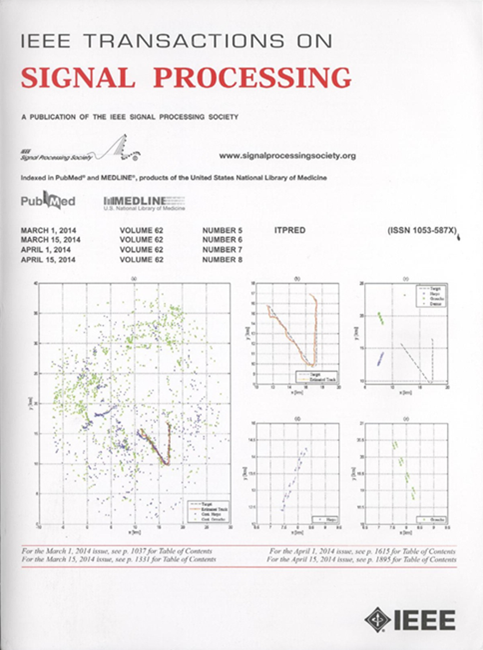Feasibility Study and Optimum Sensor Path Planning for Localization by Doppler Derivatives
IF 4.6
2区 工程技术
Q1 ENGINEERING, ELECTRICAL & ELECTRONIC
引用次数: 0
Abstract
We often rely on the emitted harmonic component for the localization of a non-cooperative source, through the Doppler shifted frequencies (DSFs) resulting from the relative motion with the sensors. Frequency mismatch in the local oscillators of the sensors can cause different offsets in the DSFs, making them unusable for localization. This paper explores the use of Doppler Derivative (DD), which is the rate of change of DSF and is free from frequency synchronization offset, for the localization of a static source by a few sensors in motion. We show that localization by DD is feasible, except for some blind scenarios where the conditions are established. We then continue to derive the optimum sensor placement for an optimum geometry that achieve the best localization performance by the D-Optimality criterion. The optimum geometries are extended to the optimum sensor path planning so that the optimality can be maintained as the sensors move. The cases of known and unknown center frequency, and 2-D and 3-D scenarios are considered. Simulations by the Maximum Likelihood Estimator validate well the theoretical developments.多普勒导数定位的可行性研究及传感器路径优化规划
我们通常依靠发射的谐波分量来定位非合作源,通过与传感器的相对运动产生的多普勒频移(dsf)。传感器本地振荡器的频率不匹配会导致dsf中的不同偏移,使它们无法用于定位。本文探讨了多普勒导数(DD)的应用,它是DSF的变化率,不受频率同步偏移的影响,用于运动中的几个传感器对静态源的定位。我们证明了DD定位是可行的,除了一些条件已经建立的盲目场景。然后,我们继续根据D-Optimality准则推导出最佳几何形状的最佳传感器位置,以实现最佳定位性能。将最优几何形状扩展到最优传感器路径规划中,使传感器在移动过程中保持最优性。考虑了中心频率已知和未知、二维和三维情况。极大似然估计器的仿真很好地验证了理论发展。
本文章由计算机程序翻译,如有差异,请以英文原文为准。
求助全文
约1分钟内获得全文
求助全文
来源期刊

IEEE Transactions on Signal Processing
工程技术-工程:电子与电气
CiteScore
11.20
自引率
9.30%
发文量
310
审稿时长
3.0 months
期刊介绍:
The IEEE Transactions on Signal Processing covers novel theory, algorithms, performance analyses and applications of techniques for the processing, understanding, learning, retrieval, mining, and extraction of information from signals. The term “signal” includes, among others, audio, video, speech, image, communication, geophysical, sonar, radar, medical and musical signals. Examples of topics of interest include, but are not limited to, information processing and the theory and application of filtering, coding, transmitting, estimating, detecting, analyzing, recognizing, synthesizing, recording, and reproducing signals.
 求助内容:
求助内容: 应助结果提醒方式:
应助结果提醒方式:


